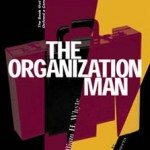What is it that makes the iPod so cool? Simplicity, right? That and portability. And functionality. All are ingredients of great design.
portability. And functionality. All are ingredients of great design.
It was attributes like these that were championed by designers of the early-20th century Bauhaus movement. But as former BusinessWeek writer Jay Greene reveals in his Design Is How It Works: How the Smartest Companies Turn Products into Icons (Portfolio, $25.95), today there’s a lot more to it. Now, the smartest designs address needs that consumers didn’t even know they had. Moreover, those ubiquitous iPods and iPhones, as one Seattle designer tells Greene, are not merely products that other companies can imitate. They are manifestations of Apple’s corporate culture, where design isn’t just an add-on but a fundamental consideration at every stage of the process.
Greene (no relation to yours truly) considers design at a number of corporate path breakers: Porsche, Nike, LEGO, Virgin Atlantic, and more. One of the most interesting to me is OXO, a maker of design-centric kitchenware including a much –imitated vegetable peeler with a fat, industrial-rubber handle.
OXO’s wares are a prime example of addressing needs that cooks didn’t know they had. Once everyone bought cheap veggie peelers at the supermarket and accepted the fact that they were unwieldy and a pain to use. OXO founder Sam Farber witnessed his wife struggling with a peeler as she labored over an apple tart. Shortly thereafter, he called Davin Stowell, a founder of New York firm Smart Design, which before long was rethinking a number of kitchen standards. Their better peeler’s fat handle decreased hand strain – and its blade was sharp. OXO would become the manufacturer of the peeler, along with some 800 other products including an angled and easy-to-read measuring cup. The company’s approach, which stresses intuition over market research, can increase product-development costs fivefold. That leaves OXO charging a premium for its stuff. But the company has prospered even through the recession: In 2010, its sales jumped 13%, to $203.6 million.
Company president Alex Lee, a graduate of New York’s Parsons School of Design, offers a key insight about OXO’s process. “People here are looking for problems all the time,” he tells Greene. “Our process is finding a pet peeve. If there’s no pet peeve, there’s no product.” But many of these aggravations are annoyances that consumers just put up with, as if there were no imaginable fix. It turns out that, beyond every wrinkled consumer brow, there’s a Eureka moment waiting to happen.



